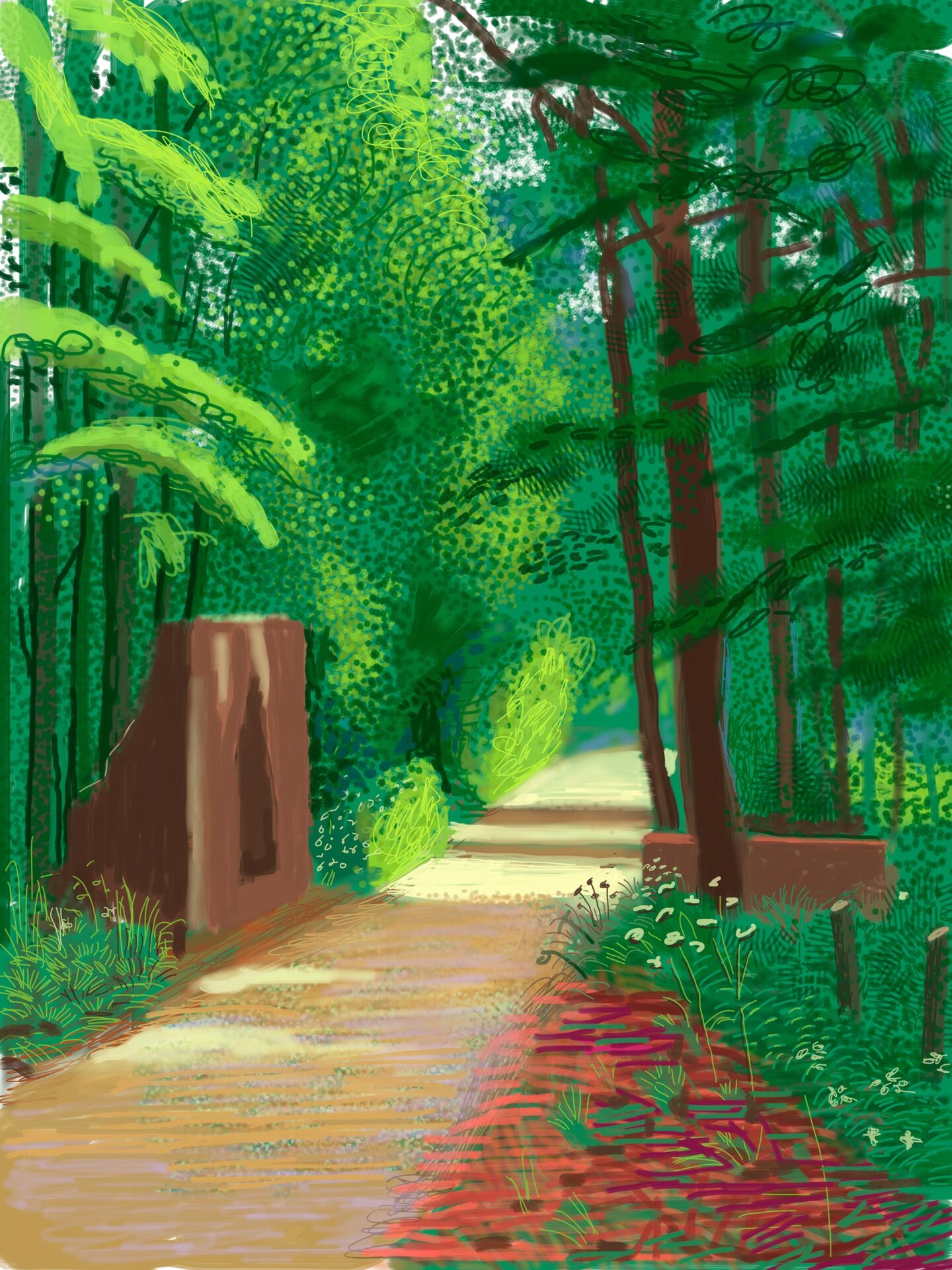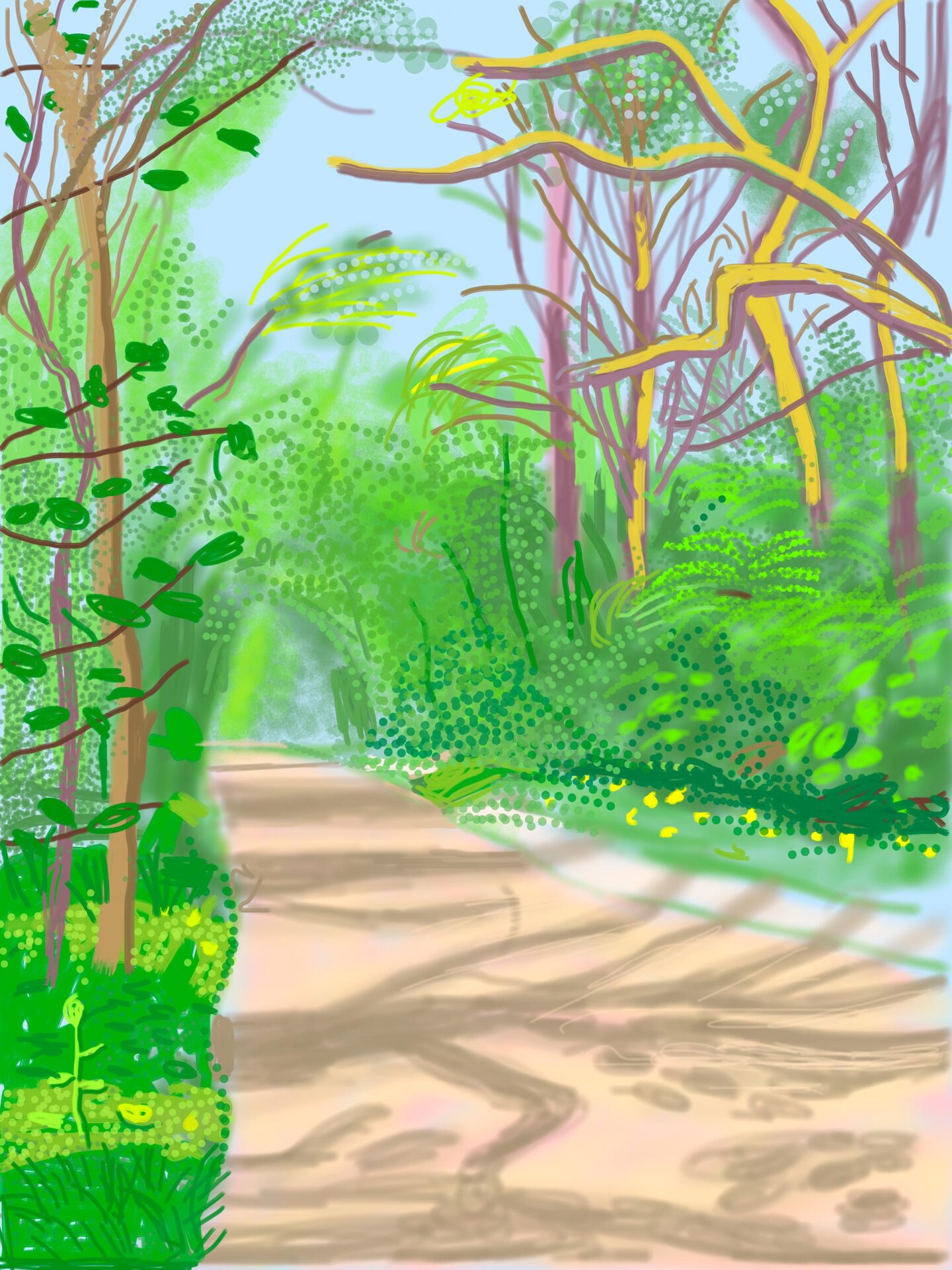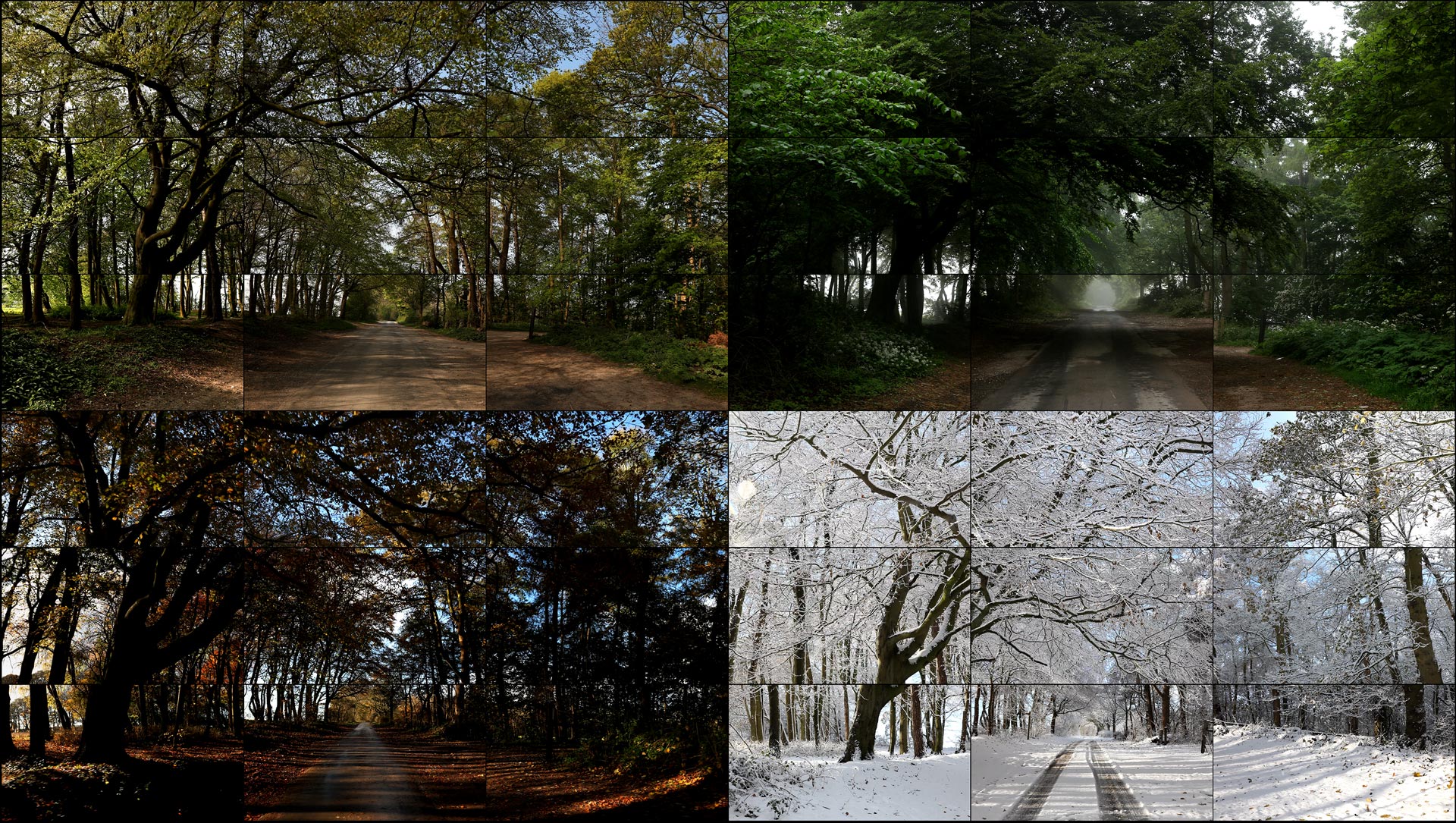David Hockney, a clear example of the artistic revolution that took place in London in the 1960s, entered the Royal College of Art in September 1959, where his fellow students included Frank Bowling, R. B. Kitaj and Allen Jones, artists who were to dominate the British art scene in the following decade.
Hockney began painting in the predominant style of the time, Abstract Expressionism, with figures like Pollock, Rothko and Clyfford Still as major references. However, another student, Kitaj, told him that perhaps he should paint about the things that concerned him, such as politics or sex; in short, about human beings, and that was how his style turned towards the figurative. In these new works, there was also room for messages in the form of phrases or expressions that the artist added to the paintings. Hockney was beginning to find his own style.
In January 1961, he took part in the Young Contemporaries exhibition, in which a jury composed of the art critic Lawrence Alloway and artists such as Frank Auerbach and Anthony Caro selected the work of a series of students, mainly from the Royal College. The show was a success and Hockney’s Love series of paintings was praised by both public and experts. Hockney himself remarks that “it was probably the first time that there’d been a student movement in painting that was uninfluenced by older artists in this country”.1
In the summer of 1961, Hockney took a trip to New York that changed his life, as he found an open, tolerant society in which the homosexual community was more organised. In his own words, New York “was amazingly sexy and incredibly easy”.2 The next city was Los Angeles, where he arrived in January 1964 and where he spent much of his life. As Hockney himself said: “This place needs its Piranesi; Los Angeles could have a Piranesi, so here I am!”3 The fact is that Hockney was enthralled by those intersecting five-lane freeways and by the architecture and lifestyle of a city that he has portrayed so well in those paintings of Californian houses with their famous swimming pools.
Hockney, who came from a small city like Bradford, had been fascinated by London in his student years, but discovering American cities eclipsed the British capital. “Life should be more exciting, but all they have [in London] is regulations stopping you from doing anything. I used to think London was exciting. It is, compared to Bradford. But compared with New York or San Francisco it’s nothing”,4 the artist declared.
Hockney’s work has been characterised by the use of a very wide range of techniques and materials. The works in the Hortensia Herrero collection are a good illustration of this. On the one hand, there is one of his most iconic works: The Four Seasons. In this video creation, composed of 36 synchronised screens with 36 videos, the artist films the woods of East Yorkshire from a car equipped with nine cameras, which travel the same route at four different times of year. The complete work consists of four panels, with nine screens for each season, which the viewer can watch at the same time, thus seeing how the landscape changes over the course of the year.
The arrival of spring in Woldgate, in East Yorkshire, is also the object of another two works by Hockney belonging to the Hortensia Herrero collection, created with an iPad, a technique he has begun to work with recently and that reflects his interest in new technologies.
On the other hand, the collection also includes Autour de la maison, Été and Autour de la maison, Hiver (both 2019), in which Hockney once again captures the differences in the same landscape during winter and summer. In this case, it is the surroundings of his house in Normandy, where he spent lockdown during the COVID-19 pandemic. Although in these works Hockney does not paint the sky, because, as he himself says, it changes too quickly, we can clearly perceive the difference between one season and another from the colours. Both in these two works and in The Four Seasons the narrator is at the centre of the work; you cannot see him, but you sense his presence.




